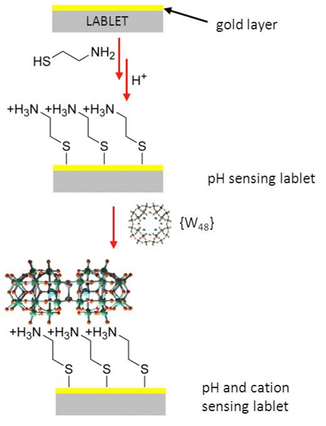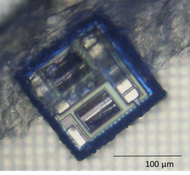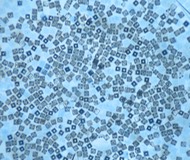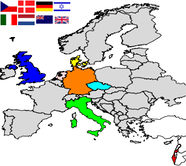The objective of the second year of WP1 of this project is to functionalise lablets with a pH and cation sensor. We have demonstrated last year that the aminoethanethiol can bind to a gold electrode and sense variations in pH. In the past, we have also described the synthesis and demonstrated that the polyoxometalate (POM) [P8W48O184]40- (in the figure this POM is labelled {W48}) can be used as a cation sensor in solution. This year we and collaborators have designed an ISFET chip which, when coated with the POM {W48} can sense variations in concentration of the K+ and NH4+ cations. We are transferring these results to the lablet scale. Indeed, POMs are intrinsically negatively charged, which means that they can easily coat any positively charged layer on a surface. Tests for pH and cation sensitivity will soon be performed on fully operational lablets.

Note. For ease of representation, the scales in this figure have been freely adapted.




